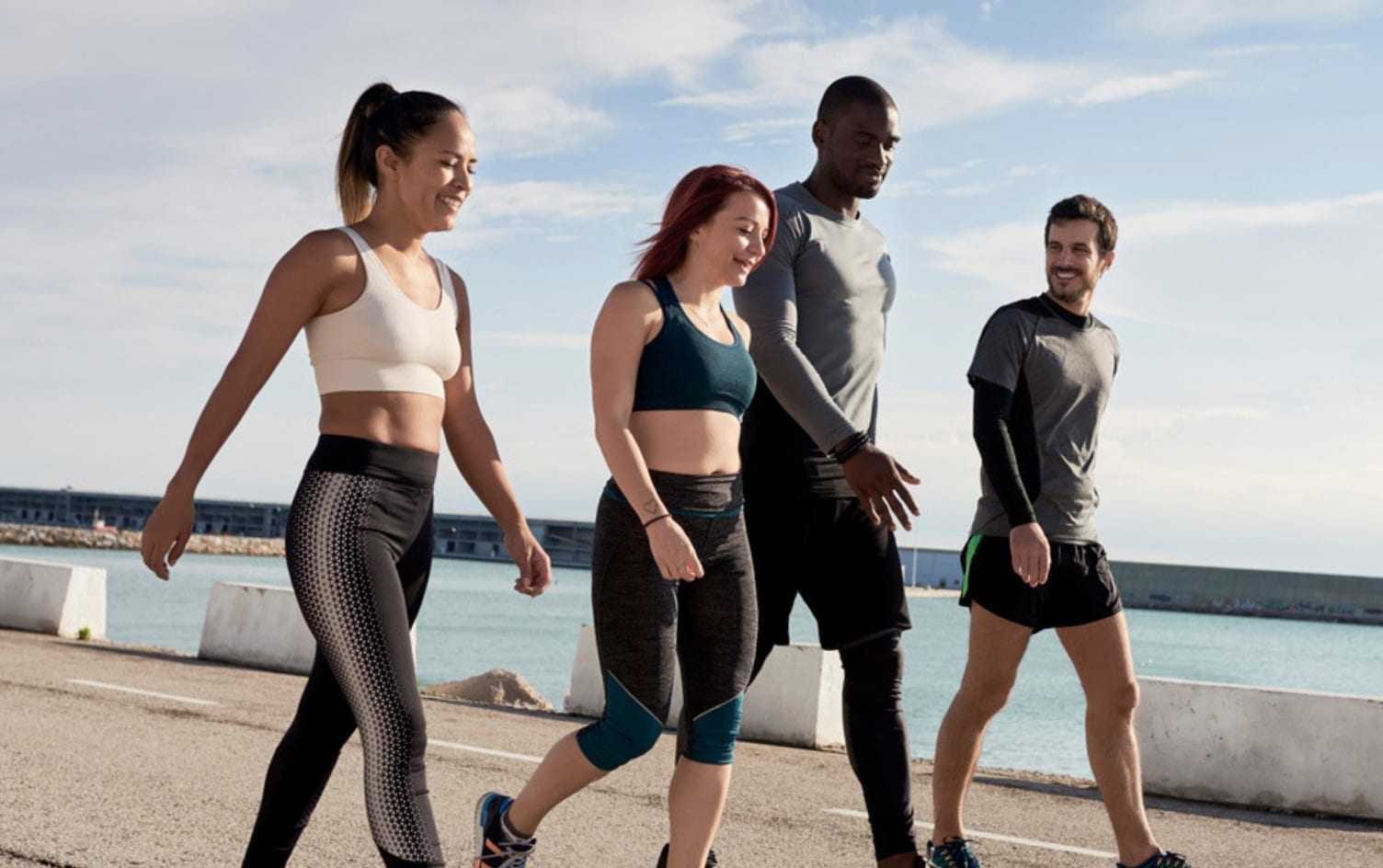While you might not identify with pro athletes, the truth is the best forms of training and recovery aren’t reserved for elites, nor are they complicated. In fact, many pros swear by one of the simplest forms of movement — walking. “It can be an important part of any training program, no matter the person,” confirms Cary Williams, an Olympic-level female boxing coach and CEO of the company Boxing & Barbells.
Here, six ways top athletes work walking into their routines and how you can benefit regardless of ability level:
AS RECOVERY
Walking is an especially valuable recovery tool because it’s low-impact, explains Adnan Munye, a personal trainer based in the United Kingdom. On the days you’re not training, a quick walk can keep your muscles engaged without putting too much force on your joints and tendons. You’ll also avoid overloading your body, which can result in a weaker immune system, injury and illness, says Munye. Post-workout, walking is a solid option for active recovery, too, as you’ll keep your blood flowing and clear away lactic acid (a cause of soreness) from your muscles.
FOR REHAB
Post-injury, forward and backwards walking as well as side-stepping can help you recover faster, says Weiss, who uses the technique with sidelined athletes. Walking backwards improves your balance and hamstring strength, he says, while walking sideways helps strengthen your back and legs as you rotate back and forth.
IN TAI CHI
Tai chi, a Chinese martial art that combines slow, graceful movements with deep breathing, can improve your proprioception (aka your sense of your body’s position and movement through space). “Slow, controlled, deliberate and precise steps focusing on every component of the gait cycle bring awareness to sensory receptors on your feet,” explains Scott A. Weiss, certified strength and conditioning specialist, a New York-based physical therapist and trainer who works with professional and UFC athletes and boxers. Go barefoot with this walking exercise to up your balance and stability, suggests Weiss. Even better, practice mindfulness with every breath and movement. Tai chi is naturally meditative, so you could also lower your cortisol levels and de-stress while you’re at it, he says.
TO BUILD STRENGTH
Think about how often you walk in a straight line every single day, and how animal walking — getting on the ground to move a little differently — can have several benefits. “Bear crawls, for example, strengthen your shoulder and arm muscles, and, in turn, increase your balance, flexibility and motor control,” says Weiss. For more of a challenge, try lizard walks, which can help build an even stronger core and improve back and hip rotation, key for avoiding injury and pesky low-back pain.
FOR INTERVAL TRAINING
Try combining sprints with walking instead of jogging during slower sections of interval training, suggests Weiss. By switching between super fast and super slow, you’ll up your aerobic fitness and your body’s ability to deliver oxygen to your muscles so you can work harder in the future, he says. Try this HIIT walking guide to get started.
TO IMPROVE MENTAL CLARITY
“Going for a walk can help an athlete clear his or her thoughts and refocus on goals and the path to achieving them,” says Williams. Walking increases blood flow to your brain, potentially giving your thought processes and mood a boost. So, next time you’ve had a rough day at work or you’re just feeling stressed out, find more ways to travel by foot.




